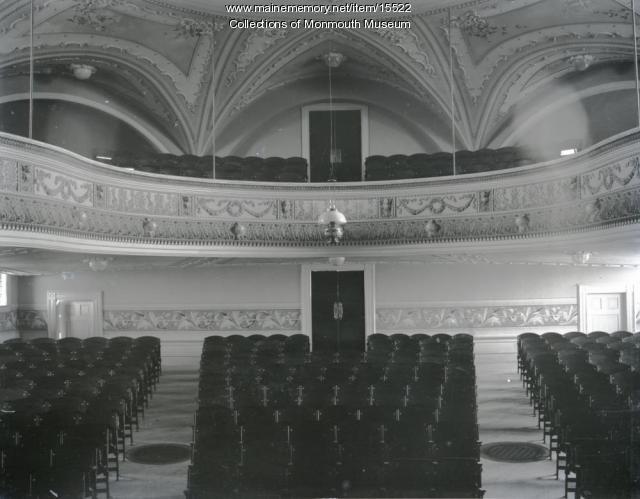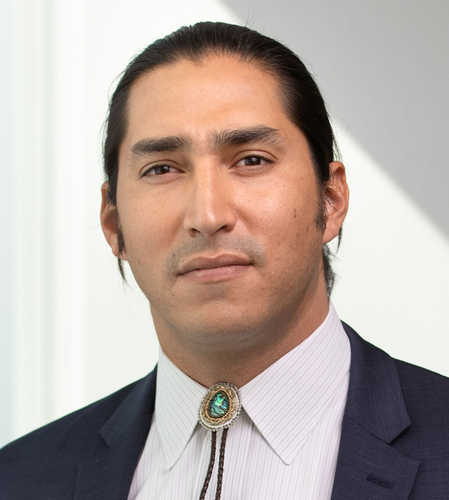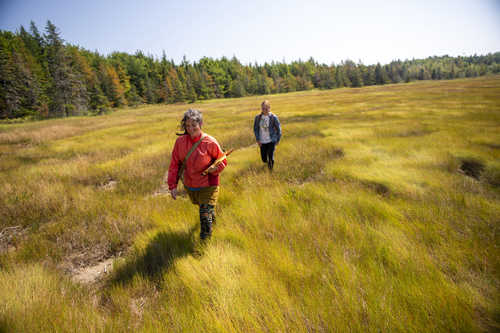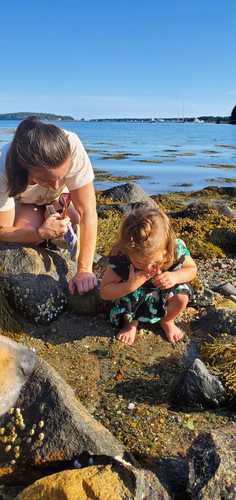Keywords: Indigenous peoples
Item 14423
Contributed by: Abbe Museum Date: circa 1970 Location: Indian Township Media: Ash, sweetgrass, dye
Item 14426
Bell-shaped Sewing Basket, ca. 1981
Contributed by: Abbe Museum Date: circa 1981 Location: Odanak Media: Ash, sweetgrass
Exhibit
Northern Threads: Penobscot mocassins
A themed exhibit vignette within "Northern Threads, Part I," about telling stories through Indigenous clothing, featuring an essay by Jennifer Sapiel Neptune (Penobscot.)
Exhibit
Holding up the Sky: Wabanaki people, culture, history, and art
Learn about Native diplomacy and obligation by exploring 13,000 years of Wabanaki residence in Maine through 17th century treaties, historic items, and contemporary artworks—from ash baskets to high fashion. Wabanaki voices contextualize present-day relevance and repercussions of 400 years of shared histories between Wabanakis and settlers to their region.
Site Page
"Powwows are an opportunity for Indigenous people to socialize, dance, sing, sell their art, and honor their cultures."
Site Page
Music in Maine - Community and School Marching Bands
"… artwork were major sources of income for many Indigenous peoples. John Susep stands on the far left in the second row."
Story
Epidemic of violence against Indigenous people
by Michael-Corey F. Hinton
Systemic racism, murder, and the danger of stereotypes
Story
Welimahskil: Sweet grass
by Suzanne Greenlaw
Weaving Indigenous Knowledge (IK) and western science around Sweetgrass
Lesson Plan
Grade Level: 6-8, 9-12, Postsecondary
Content Area: Science & Engineering, Social Studies
This lesson presents an overview of the history of the fur trade in Maine with a focus on the 17th and 18th centuries, on how fashion influenced that trade, and how that trade impacted Indigenous peoples and the environment.
Lesson Plan
Wabanaki Studies: Stewarding Natural Resources
Grade Level: 3-5
Content Area: Science & Engineering, Social Studies
This lesson plan will introduce elementary-grade students to the concepts and importance of Traditional Ecological Knowledge (TEK) and Indigenous Knowledge (IK), taught and understood through oral history to generations of Wabanaki people. Students will engage in discussions about how humans can be stewards of the local ecosystem, and how non-Native Maine citizens can listen to, learn from, and amplify the voices of Wabanaki neighbors to assist in the future of a sustainable environment. Students will learn about Wabanaki artists, teachers, and leaders from the past and present to help contextualize the concepts and ideas in this lesson, and learn about how Wabanaki youth are carrying tradition forward into the future.
















